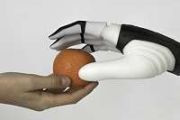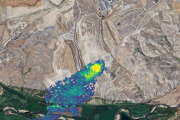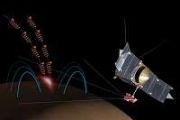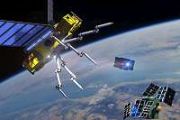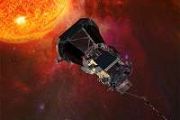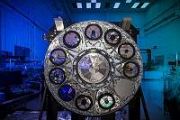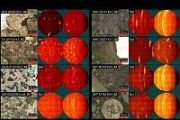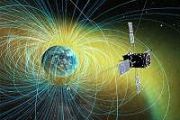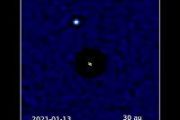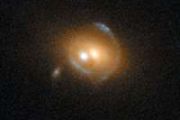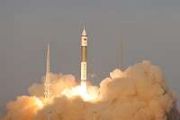GIOVE, or Galileo In-Orbit Validation Element, is the name for each satellite in a series being built for the European Space Agency (ESA) to test technology in orbit for the Galileo positioning system.
Giove is the Italian word for "Jupiter". The name was chosen as a tribute to Galileo Galilei, who discovered the first four natural satellites of Jupiter, and later discovered that they could be used as a universal clock to obtain the longitude of a point on the Earth's surface.
The GIOVE satellites are exploited by the GIOVE Mission (GIOVE-M) segment in the frame of the risk mitigation for the In Orbit Validation (IOV) of the Galileo positioning system.
GIOVE-A
Previously known as GSTB-V2/A, this satellite was constructed by Surrey Satellite Technology Ltd (SSTL).
Its mission has the main goal of claiming the frequencies allocated to Galileo by the ITU. It has two independently-developed Galileo signal generation chains and also tests the design of two on-board rubidium atomic clocks and the orbital characteristics of the intermediate circular orbit for future satellites.
GIOVE-A is the first spacecraft whose design is based upon SSTL's new Geostationary Minisatellite Platform (GMP) satellite bus, intended for geostationary orbit. GIOVE-A is also SSTL's first satellite outside low Earth orbit, operating in medium Earth orbit), and is SSTL's first satellite to use deployable sun-tracking solar arrays. Previous SSTL satellites use body-mounted solar arrays, which generate less power per unit area as they do not face the sun directly.
Launched on 28 December 2005
It was launched at 05:19 UTC on December 28, 2005 on a Soyuz-FG/Fregat from the Baikonur Cosmodrome in Kazakhstan.
It began communicating as planned at 09:01 UTC while circling the Earth at a height of 23,222 km. The satellite successfully transmitted its first navigation signals at 17:25 GMT on 12 January 2006. These signals were received at Chilbolton Observatory in Hampshire, UK and the ESA Station at Redu in Belgium. Teams from SSTL and ESA have measured the signal generated by GIOVE-A to ensure it meets the frequency-filing allocation and reservation requirements for the International Telecommunication Union (ITU), a process that was required to be complete by June 2006.
The GIOVE-A signal in space is fully representative of the Galileo signal from the point of view of frequencies and modulations, chip rates, and data rates. However, GIOVE-A can only transmit at two frequency bands at a time (i.e., L1+E5 or L1+E6).
GIOVE-A codes are different from Galileo codes. The GIOVE-A navigation message is not representative from the structure and contents viewpoint (demonstration only purpose). The generation of pseudorange measurements and detailed analysis of the tracking noise and multipath performance of GIOVE-A ranging signals have been performed with the use of the GETR (Galileo Experimental Test Receiver) designed by Septentrio.
There has been some public controversy about the open source nature of some of the Pseudo-Random Noise (PRN) codes. In the early part of 2006, researchers at Cornell monitored the GIOVE-A signal and extracted the PRN codes. The methods used and the codes which were found were published in the June 2006 issue of GPS World. ESA has now made the codes public.


























